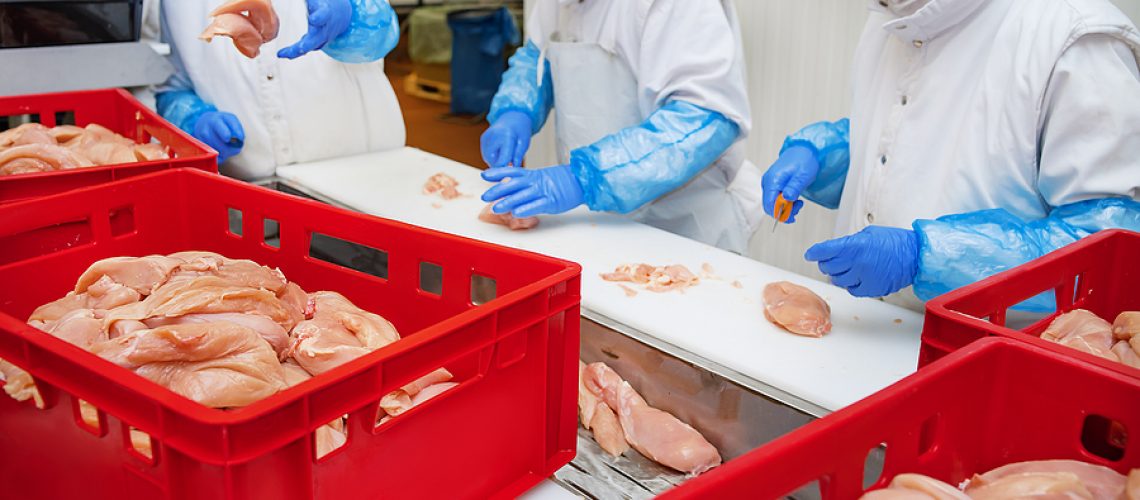Have you heard of a slaughterhouse?
Well, that is where it all goes down.
On one end, an animal goes in as a whole. On the other, it comes out packed up into tiny pieces.
Since the Covid 19 outbreak, there has been a concern.
No, you and your loved ones are not likely to contract the Covid virus from this meat.
The concern here has been the meat shortage.
So, what has Covid 19 got to do with the meat shortage?
The Covid 19 pandemic, among many other destructions it has left in its wake, has led to the recent closure of many meat processing and packing plants. That has mainly been due to the rise of Covid 19 infection among workers at the plants.
It turns out that slaughterhouses and meat processing plants are hotbeds for the Covid 19 virus, and here are the reasons why:
- SARS-CoV-2, the virus that causes Covid 19, thrives in low temperatures.
- Most surfaces in meat processing and packaging plants are metallic. Covid 19 is known to thrive on metallic surfaces longer than others.
- Communication between workers at the plant is a challenge because there is too much noise. One has to shout to be heard, increasing the chances of spreading the virus through saliva droplets.
- Social distancing is difficult due to a large number of workers in meat plants.
- Most plant workers belong to the younger generations, unlikely to show any symptoms when infected with the virus.
- Without sick leave and health insurance, workers cannot afford to pay for medication and could keep working even when unwell risking spreading the disease even further.
- Little to no attention paid to hygiene matters
The sanitation industry may have the answer the food industry is seeking right now. By coming up with ways to better protect workers from this virus, the sanitation industry could help protect the meat supply chain and ensure the meat processing and packaging industry continues with its operations as it did pre-covid era.
The food processing industry is obligated to continue advocating for the best practices and procedures at these plants.
Professional Cleaning and Disinfecting for the Meatpacking and Processing Industry
Hygiene measures at meat plants need to be applied proactively by disinfecting all high-touch areas. When a plant gets exposed to the Covid virus, there should be clear decontamination procedures in place. Policies also need to be put in place to protect the workers’ health.
Cleaning a Meat Plant
First, what is cleaning?
Cleaning refers to the removal of visible dirt on walls, floors as well as tools and equipment.
Cleaning with soap and water may not eliminate all the microorganisms, but it will remove at least 90% of them. That’s because microorganisms form biofilms, a natural cover that protects them from harmful things—soap and water are some of them. Biofilms are not easily removed by cleaning, which will require the application of hot water/steam or a disinfectant.
Pre-cleaning procedures
First, remove all foods from the area to avoid contamination from dirty water droplets during cleaning. Disinfectants have toxic residues that you don’t want anybody to ingest with the packed meat or its products.
Then find the right cleaning products for the surfaces you intend to clean and the kind of contamination you want to eliminate.
Dry Cleaning
When you get to the actual cleaning, dry cleaning should be your first step.
But what is dry cleaning, and what does it involve?
Before you pick up soap and water to clean, you need to eliminate the solid particles using a dry broom and a shovel. Such large particles of dirt, if left unattended, will cause clogging, block drainages, water wastage.
High-pressure cleaning
Once you have gotten rid of the heavy solid dirt, the next step would ideally be to pick your bucket of water, soap, and brush. In the meat industry, however, there is a preference for high-pressure cleaning. That’s mainly because of the enormous size of the structures. I mean, brushes would be ideal but too labor and time-consuming.
Why use high-pressure cleaning?
To remove any remaining solid particles that may have been too small to pick during the dry-cleaning. Ideally, you should use hot water at this stage.
To effectively clean with high pressure:
· Apply pressure between 30 and 70 bar
· Hold the spraying nozzle not further than 15CM away from the surface you are cleaning
· Use water at temperatures of 55 degrees Celsius if you choose to go for hot water to get rid of the fat
Even though a pressurized steam/water mix works best here due to the ability to raise temperatures to 100 degrees Celsius, you will encounter excessive fog and a lot of aerosol formation during the cleaning. These can spread microbes, while extreme temperature changes may affect the equipment.
To navigate these challenges, avoid steam/water mix and use cold or hot pressurized water to clean.
Chemical Cleaning
Cleaning with water alone may not eliminate sticky layers of fat and protein. That will require the intervention of chemical cleaning solutions.
Traditionally, alkaline worked well for manual cleaning. However, it can cause corrosion of tools and equipment if their PH rises above 11.
Today, complex compositions of alkaline, acid, or neutral chemicals are preferred. Surface-active agents called surfactants or detergents are added to improve the dirt loosening ability by decreasing the superficial tension of water.
Disinfecting a Meat Plant
Cleaning may reduce the Covid 19 virus, but it will not eliminate them. For complete elimination, disinfection has to be applied.
You can choose to disinfect using hot water/steam, or you can use chemical disinfectants. Whichever method you pick, the disinfectant should not have adverse effects on human health.
Even though using hot water/steam eliminates any chances of such adverse effects, chemical disinfectants are a better option due to their ease of application and the low risk of causing accidents.
Disinfecting will only be effective if the pre-cleaning is done correctly. That’s because any protein left on the surfaces will inactivate the chemical disinfectant.
Cleaning products like detergents can also render chemical disinfectants ineffective and a waste of time and money. Therefore, rinse the surface with water before disinfecting to eliminate any cleaning products that may have remained. However, do not forget to dry the water before applying the disinfectant to avoid messing up with the concentration of the disinfectant.
Other factors you need to consider are manufacturer instructions as well as recommended contact time.
How often you need to disinfect will depend on what you are disinfecting:
· Several times, daily: This is necessary for hand tools and meat cutting boards
· Daily: Use this on dismantled equipment parts
· Weekly: This is most applicable on other equipment, floors, and walls
Final Thoughts
The Covid 19 era has forced many people to learn to live with many negative changes in their lives. That should not in any way include the food shortage that the pandemic has threatened to bring along.
We all know that the worst enemy of a disease-causing microorganism, specifically the SARS-CoV-2 virus, is good hygiene. The meat processing and packaging industry, therefore, also needs to step it up.
Policies also need to be put in place to protect the health and safety of plant workers. Apart from wearing masks and keeping social distance, proper hygiene at the meat processing and packing plants may be what determines if you will be enjoying your next piece of sumptuous stake or missing it altogether.


